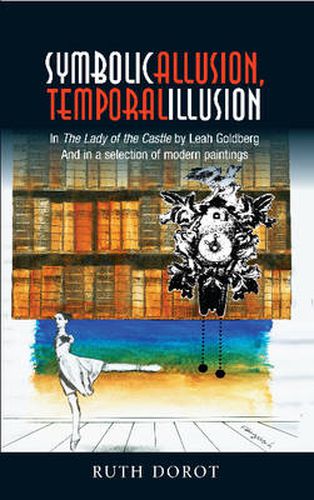Readings Newsletter
Become a Readings Member to make your shopping experience even easier.
Sign in or sign up for free!
You’re not far away from qualifying for FREE standard shipping within Australia
You’ve qualified for FREE standard shipping within Australia
The cart is loading…






This book draws parallels between literature and the arts, and between drama and painting, in terms of Time and Symbolism, as they appear in the play The Lady of the Castle by Leah Goldberg, and in a group of selected paintings by Marc Chagall, Salvador Dali, Rene Magritte, Paul Klee and Edward Munch. Discussion focuses on the connection between the written play-text and the paintings through their common visual qualities and in terms of their common thematic, structural and stylistic characteristics. In a world dominated by science and technology, which renders belief in any absolute problematic, two seminal events have left a permanent mark on the contemporary concept of time: Einstein’s theory of relativity and Bergson’s philosophy of duration (simultaneite and duree). In their wake, Time has become relative and fragmented – a central theme in the play and in the selected works of art under discussion. Objective, scientific and chronological time is contrasted with inner, psychological time (duration), which differs from individual to individual and from culture to culture. Four categories of time are assessed: historical, physical-chronological, psychological and eternal. The primary meaning behind a symbol makes the basic assumption that a particular object or entity may represent another essence. In attempting to understand the temporal/symbolic linkages of the text and paintings, much importance is attributed to the relationship between representer’ and represented’ and between concrete and abstract. Through symbolic abstraction one is able to better comprehend the human and cosmic phenomena the symbol seeks to decipher. The book deals with a castle. This central symbol of the play and the paintings is multifaceted, representing what is manifest and what is hidden within the castle, revealing a magical encounter between the world of words and the world of colour.
$9.00 standard shipping within Australia
FREE standard shipping within Australia for orders over $100.00
Express & International shipping calculated at checkout
This book draws parallels between literature and the arts, and between drama and painting, in terms of Time and Symbolism, as they appear in the play The Lady of the Castle by Leah Goldberg, and in a group of selected paintings by Marc Chagall, Salvador Dali, Rene Magritte, Paul Klee and Edward Munch. Discussion focuses on the connection between the written play-text and the paintings through their common visual qualities and in terms of their common thematic, structural and stylistic characteristics. In a world dominated by science and technology, which renders belief in any absolute problematic, two seminal events have left a permanent mark on the contemporary concept of time: Einstein’s theory of relativity and Bergson’s philosophy of duration (simultaneite and duree). In their wake, Time has become relative and fragmented – a central theme in the play and in the selected works of art under discussion. Objective, scientific and chronological time is contrasted with inner, psychological time (duration), which differs from individual to individual and from culture to culture. Four categories of time are assessed: historical, physical-chronological, psychological and eternal. The primary meaning behind a symbol makes the basic assumption that a particular object or entity may represent another essence. In attempting to understand the temporal/symbolic linkages of the text and paintings, much importance is attributed to the relationship between representer’ and represented’ and between concrete and abstract. Through symbolic abstraction one is able to better comprehend the human and cosmic phenomena the symbol seeks to decipher. The book deals with a castle. This central symbol of the play and the paintings is multifaceted, representing what is manifest and what is hidden within the castle, revealing a magical encounter between the world of words and the world of colour.